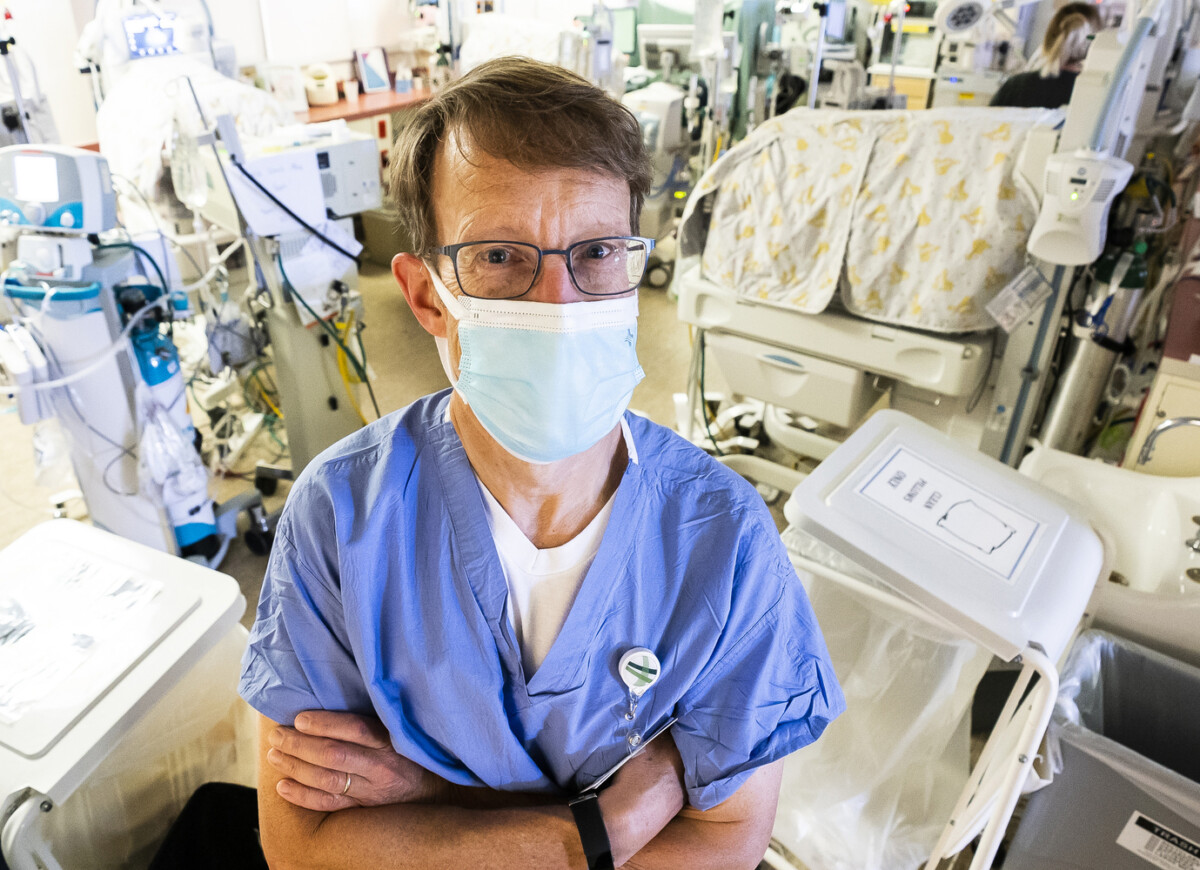‘The Best Combination of Care’

In the best of circumstances, childbirth is stressful for all involved. If the baby arrives early, or experiences distress at birth, fear and anxiety from loved ones can spike – especially in rural areas where access to life-saving care is limited.
Newborns in need of critical care in Vermont and northern New York are often transported to the neonatal intensive care unit (NICU) at The University of Vermont Children’s Hospital – the only NICU in Vermont – when they are born prematurely, are in need of supportive measures like respiratory therapy or require life-saving care and surgery. But the precarious time between childbirth and before babies arrive at the NICU can present its own challenges.
Now, new technology is helping to ease some of that angst by connecting the youngest patients with specially trained neonatal experts via video, allowing doctors at smaller hospitals to initiate necessary interventions and care much faster.
I feel like I’m present in the room. I can zoom in and see features of the baby that puts me right at the bedside. It’s a remarkable technology. We’ve improved our ability to co-manage the baby’s care from the time a transport request was made until the time our team returns to the NICU.
Charles Mercier, MD, MPH, Medical Director of the NICU at UVM Children’s Hospital
Here’s how it works: Cameras with very high video resolution have been installed at UVM Health Network’s community hospitals allowing specialists at the UVM Children’s Hospital to see what’s happening with the baby, providing real-time advice to doctors on the ground who may have questions. Transport ambulances have also been equipped with cameras connecting them with the NICU, meaning that connected care on the way to the hospital can be continuous.
While primary care physicians and hospitalists are well versed in delivering babies and providing for the medical needs of newborns, sometimes more specialized expertise is needed.
Anna Hankins, MD, a pediatrician at UVM Health Network – Central Vermont Medical Center, says the video connection to experts in the UVM Children’s Hospital NICU allows for better delivery of care.
“We do not take care of babies who are born very, very early, very often. And so if a baby is born suddenly under emergency conditions here at Central Vermont Medical Center and only weighs a couple of pounds, I want help as quickly as I can get it,” Dr. Hankins says.
Before the camera systems were installed earlier this year, Dr. Hankins said it could feel “very lonely in the middle of the night” when she and her team were caring for a newborn in critical condition and awaiting the transport team. “We’re all doing something that we don’t do every day and with a tiny and very vulnerable infant. I always breathe that big sigh-of-relief when the transport team arrives from UVM Children’s Hospital,” she says.
Before the high-tech video systems were available, doctors and care teams often relied on more basic technology, like telephones, for advice. “I have actually been in sterile gloves trying to do a careful procedure, like inserting a central line, while a nurse is holding the phone to my ear so that I can talk and give my description of the current situation to the NICU at UVM Children’s Hospital while we’re waiting for the transport team to arrive,” Dr. Hankins says.
The new video technology provides the special transport team and the NICU an opportunity to connect with care teams on the ground. A collaborative care plan and coaching among respiratory therapists, nurses and physicians can be established in real-time by the time transport arrives.

You know, timing does matter. Previously, the top experts in the area wouldn’t be involved until well after the baby was born and the initial stabilization steps had taken place. Now, with telemedicine, they can be involved with us right from the very beginning.
Jennifer Covino, MD, a pediatric hospitalist at UVM Health Network – Champlain Valley Physicians Hospital
For Dr. Covino, it’s the kind of reassurance that matters. “It’s like having the neonatal ICU person in the room to guide you,” she says. “You know that you’re giving the best combination of care by working together.”
